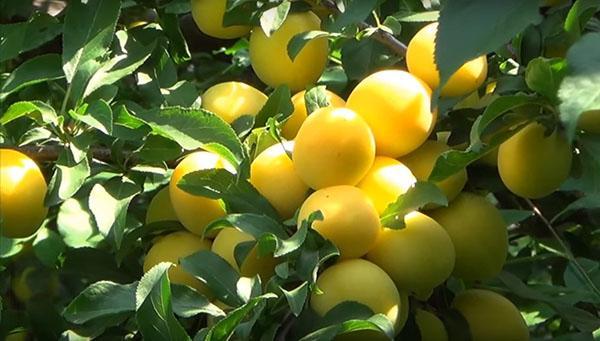Cherry plum varieties and methods of their reproduction
 Cherry plum is a stone fruit tree with yellow, orange or red fruits. Tree propagation is best done by cuttings or by grafting.
Cherry plum is a stone fruit tree with yellow, orange or red fruits. Tree propagation is best done by cuttings or by grafting.
As a rule, sauces are made from cherry plum berries, since the fruits of most varieties are sour. Breeders have bred more than 400 varieties of cherry plum, of which 20 do not have the sour taste characteristic of cherry plum. Cherry plum is a very frost-resistant crop, so it can be grown even in the northern regions of Russia. Consider the two most fruitful and sweet varieties of cherry plum - the Abundant variety and the Gek variety.
Variety Abundant
Cherry plum variety Abundant, medium ripening. Cherry plum blooms in late May. A notable feature of this variety is the good survival rate of two-year-old seedlings. The Abundant variety does not occur in nature; it is grown only in nurseries. Cuttings take root well on other stone fruit trees, therefore, this cherry plum variety is propagated by grafting on the plum bark. If you graft the Abundant variety on other varieties of cherry plum, the survival rate will be much worse.
Cherry plum bears fruit with red berries, which are completely devoid of sour taste if planted in a well-lit area. Cherry plum fruits are orange if the tree is planted in the shade. Many people confuse the Abundant variety with plum. The stone lags behind the cherry plum only when the fruit is fully ripe. Large fruits (up to 30 grams) can remain on the branches for up to 20 days after ripening. Another advantage of the variety is its resistance to diseases; cherry plum is practically not affected by pests. Abundant - cold-resistant variety.
Huck variety
Variety Gek - medium-sized, medium-ripening. Blooms cherry plum Huck early spring, in April. During the flowering period, Huck is vulnerable to weevils, so the tree is treated with insecticides. Reproduction cherry plums occurs through the formation of new basal shoots.
The fruits of the Gek variety are yellow, soft, with a thin skin. They are highly regarded for their sweet taste and wonderful aroma. Gek fruit can weigh up to 45 g. They are not suitable for making sauces, but they can be used to make excellent jam.
The disadvantage of the Gek variety is its vulnerability to disease, especially to gray mold. In order to preserve the harvest, it is necessary to treat the tree with fungicides. Spraying is stopped one month before harvest. Cherry plum Huck sings in mid-July.